From inside (document excerpt):
58DXT Downflow 2-Speed, 2-Stage, Induced-Combustion Gas Furnace Visit www.carrier.com Installation, Start-Up, and Operating Instructions Sizes 060-100, Series 110 or 120 NOTE: Read the entire instruction manual before starting the installation. This symbol indicates a change since the last issue. Index Page ® A PP R O VED R ama CANADIAN GAS ASSOCIATION SAFETY CONSIDERATIONS .1 ELECTROSTATIC DISCHARGE (ESD) PRECAUTIONS PROCEDURE .2 INTRODUCTION .2-3 Dimensional Drawing .2 Clearances to Combustibles 3 LOCATION 4 General 4 Location Relative to Cooling Equipment 4 Hazardous Locations .4 AIR FOR COMBUSTION AND VENTILATION .4-5 Unconfined Space .5 Confined Space .5 AIR DUCTS .6 General Requirements .6 Ductwork Acoustical Treatment .6 Supply Air Connection .6 Return Air Connections 6 SUPPLY-AIR PLENUM INSTALLATION (DOWNFLOW) 6 Downflow Installation .6 Installation On Combustible Floor .6 FILTER ARRANGEMENT .7 GAS PIPING .7-8 ELECTRICAL CONNECTIONS 9 115-v Wiring .9 24-v Wiring .9 Accessories 9 VENTING 9 START-UP, ADJUSTMENT, AND SAFETY CHECK .10-22 General 10 Sequence of Operation 10-14 Adaptive Heating Mode 11-13 Non-Adaptive Heating Mode .13 Cooling Mode .14 Continuous Blower Mode .14 Heat Pump Mode 14 Defrost Mode 15 Start-Up Procedures 15 Adjustments .15-21 Set Gas Input Rate 15-19 Set Temperature Rise 20 Set Thermostat Heat Anticipator 21 Check Safety Controls 21 Checklist 22 REGISTERED QUALITY SYSTEM SAFETY CONSIDERATIONS Installing and servicing heating equipment can be hazardous due to gas and electrical components.
Only trained and qualified personnel should install, repair, or service heating equipment. Untrained personnel can perform basic maintenance functions such as cleaning and replacing air filters. All other operations must be performed by trained service personnel. When working on heating equipment, observe precautions in the literature, on tags, and on labels attached to or shipped with the unit and other safety precautions that may apply. Follow all safety codes. In the United States, follow all safety codes including the National Fuel Gas Code (NFGC) NFPA 54-1996/ANSI Z223.1-1996 and the Installation Standards, Warm Air Heating and Air Conditioning Systems (NFPA 90B) ANSI/NFPA 90B. In Canada, refer to the CAN/CGA-B149.1- and .2-M95 National Standard of Canada, Natural Gas and Propane Installation Codes (NSCNGPIC). Wear safety glasses and work gloves. Have fire extinguisher available during start-up and adjustment procedures and service calls. Recognize safety information. This is the safety-alert symbol. When you see this symbol on the unit and in instructions or manuals, be alert to the potential for personal injury. Understand the signal words DANGER, WARNING, CAUTION, and NOTE. These words are used with the safety-alert symbol. DANGER identifies the most serious hazards which will result in severe personal injury or death. WARNING signifies hazards which could result in personal injury or death. CAUTION is used to identify unsafe practices which would result in minor personal injury or product and property damage. NOTE is used to highlight suggestions which will result in enhanced installation, reliability, or operation. These instructions cover minimum requirements and conform to existing national standards and safety codes. In some instances, these instructions exceed certain local codes and ordinances, especially those that may not have kept up with changing residential construction practices. We require these instructions as a minimum for a safe installation. Manufacturer reserves the right to discontinue, or change at any time, specifications or designs without notice and without incurring obligations.


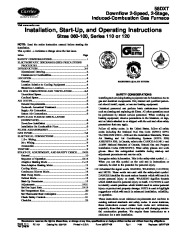 Carrier Owners Manual - 1 of 24
Carrier Owners Manual - 1 of 24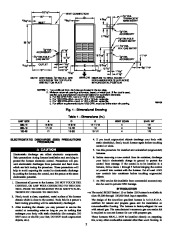 Carrier Owners Manual - 2 of 24
Carrier Owners Manual - 2 of 24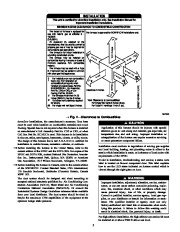 Carrier Owners Manual - 3 of 24
Carrier Owners Manual - 3 of 24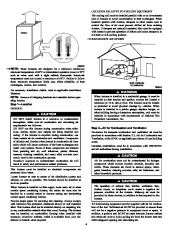 Carrier Owners Manual - 4 of 24
Carrier Owners Manual - 4 of 24 Carrier Owners Manual - 5 of 24
Carrier Owners Manual - 5 of 24 Carrier Owners Manual - 6 of 24
Carrier Owners Manual - 6 of 24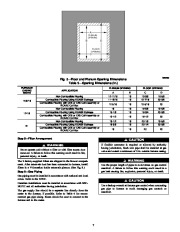 Carrier Owners Manual - 7 of 24
Carrier Owners Manual - 7 of 24 Carrier Owners Manual - 8 of 24
Carrier Owners Manual - 8 of 24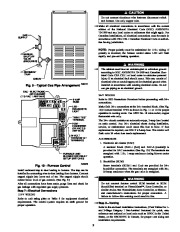 Carrier Owners Manual - 9 of 24
Carrier Owners Manual - 9 of 24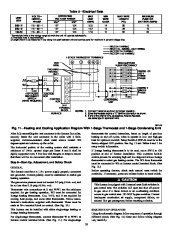 Carrier Owners Manual - 10 of 24
Carrier Owners Manual - 10 of 24